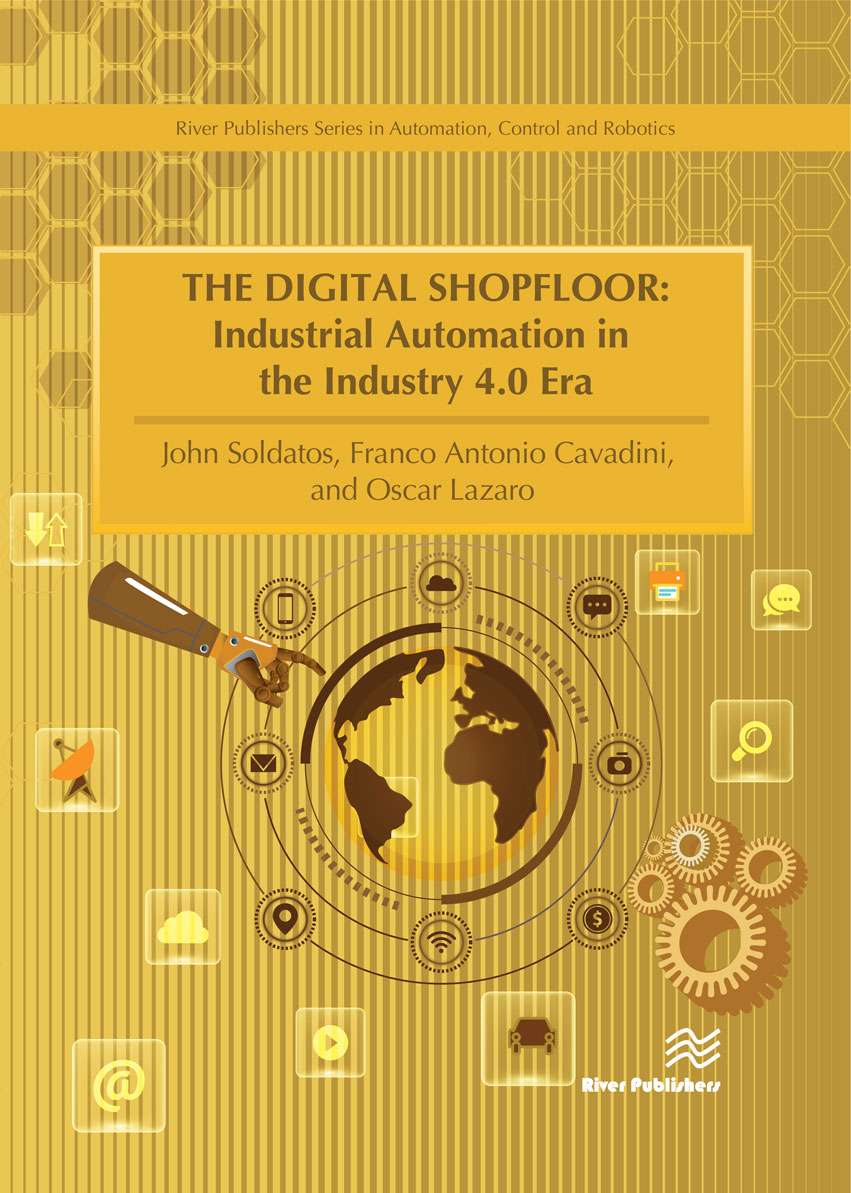
The Digital Shopfloor: Industrial Automation in the Industry 4.0 Era
Performance Analysis and Applications
River Publishers Series in Automation, Control and Robotics
The Digital Shopfloor: Industrial Automation in the Industry 4.0 Era
Performance Analysis and Applications
Editors:
John Soldatos, Athens Information Technology, Greece
Oscar Lazaro, Innovalia Association, Spain
Franco Cavadini, Synesis-Consortium, Italy
ISBN: 9788770220415
In today's competitive global environment, manufacturers are offered with unprecedented opportunities to build hyper-efficient and highly flexible plants, towards meeting variable market demand, while at the same time supporting new production models such as make-to-order (MTO), configure-to-order (CTO) and engineer-to-order (ETO). During the last couple of years, the digital transformation of industrial processes is propelled by the emergence and rise of the fourth industrial revolution (Industry 4.0). The latter is based on the extensive deployment of Cyber-Physical Production Systems (CPPS) and Industrial Internet of Things (IIoT) technologies in the manufacturing shopfloor, as well as on the seamless and timely exchange of digital information across supply chain participants. The benefits of Industry 4.0 have been already proven in the scope of pilot and production deployments in a number of different use cases including flexibility in automation, predictive maintenance, zero defect manufacturing and more. Despite early implementations and proof-of-concepts, CPPS/IIoT deployments are still in their infancy for a number of reasons, including:
- Manufacturers' poor awareness about digital manufacturing solutions and their business value potential, as well as the lack of relevant internal CPPS/IIoT knowledge.
- The high costs that are associated with the deployment, maintenance and operation of CPPS systems in the manufacturing shopfloors, which are particularly challenging in the case of SME (Small Medium Enterprises) manufacturers that lack the equity capital needed to invest in Industry 4.0.
- The time needed to implement CPPS/IIoT and the lack of a smooth and proven migration path from existing OT solutions.
- The uncertainty over the business benefits and impacts of IIoT and CPPS technologies, including the lack of proven methods for the techno-economic evaluation of Industry 4.0 systems.
- Manufacturers' increased reliance on external integrators, consultants and vendors.
- The absence of a well-developed value chain needed to sustain the acceptance of these new technologies for digital automation.
Automation, Industrial Internet of Things, Industry 4.0, Manufacturing, Simulation, Digital Twins, Automation Platforms, Training, Migration
Chapter 13: Migration Strategies towards the Digital Manufacturing Automation
by Ambra Calà, Filippo Boschi, Paola Maria Fantini, Arndt Arndt Lüder,
Marco Taisch and Jürgen Elger